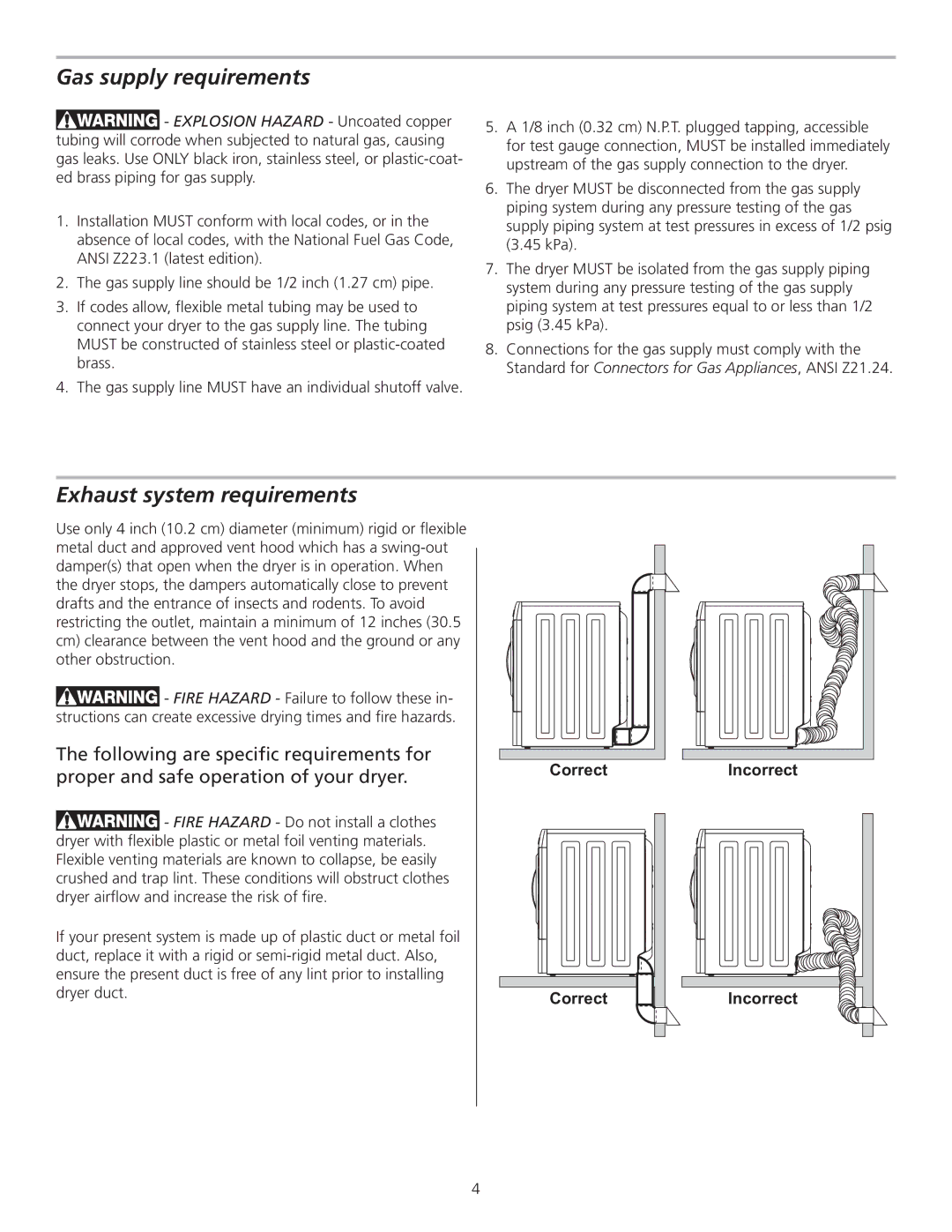
Gas supply requirements
![]()
![]()
![]()
![]()
![]()
![]() - EXPLOSION HAZARD - Uncoated copper tubing will corrode when subjected to natural gas, causing gas leaks. Use ONLY black iron, stainless steel, or
- EXPLOSION HAZARD - Uncoated copper tubing will corrode when subjected to natural gas, causing gas leaks. Use ONLY black iron, stainless steel, or
1.Installation MUST conform with local codes, or in the absence of local codes, with the National Fuel Gas Code, ANSI Z223.1 (latest edition).
2.The gas supply line should be 1/2 inch (1.27 cm) pipe.
3.If codes allow, flexible metal tubing may be used to connect your dryer to the gas supply line. The tubing MUST be constructed of stainless steel or
4.The gas supply line MUST have an individual shutoff valve.
5.A 1/8 inch (0.32 cm) N.P.T. plugged tapping, accessible for test gauge connection, MUST be installed immediately upstream of the gas supply connection to the dryer.
6.The dryer MUST be disconnected from the gas supply piping system during any pressure testing of the gas supply piping system at test pressures in excess of 1/2 psig (3.45 kPa).
7.The dryer MUST be isolated from the gas supply piping system during any pressure testing of the gas supply piping system at test pressures equal to or less than 1/2 psig (3.45 kPa).
8.Connections for the gas supply must comply with the Standard for Connectors for Gas Appliances, ANSI Z21.24.
Exhaust system requirements
Use only 4 inch (10.2 cm) diameter (minimum) rigid or flexible metal duct and approved vent hood which has a
![]()
![]()
![]()
![]()
![]()
![]() - FIRE HAZARD - Failure to follow these in- structions can create excessive drying times and fire hazards.
- FIRE HAZARD - Failure to follow these in- structions can create excessive drying times and fire hazards.
The following are specific requirements for proper and safe operation of your dryer.
![]()
![]()
![]()
![]()
![]()
![]() - FIRE HAZARD - Do not install a clothes dryer with flexible plastic or metal foil venting materials. Flexible venting materials are known to collapse, be easily crushed and trap lint. These conditions will obstruct clothes dryer airflow and increase the risk of fire.
- FIRE HAZARD - Do not install a clothes dryer with flexible plastic or metal foil venting materials. Flexible venting materials are known to collapse, be easily crushed and trap lint. These conditions will obstruct clothes dryer airflow and increase the risk of fire.
If your present system is made up of plastic duct or metal foil duct, replace it with a rigid or
Correct |
Correct
Incorrect
Incorrect
4
